Overview: Electricity Part - 2 | Basic Electricity for SSS 2 PDF Download
Electric Potential
- When two charged bodies come into contact, charge can flow from one conductor to the other.
- The factor that determines the flow of charge from one conductor to another in contact is the electric potential.
- Electric potential is analogous to other physical quantities, such as the level of water in the case of fluids, temperature in the case of heat, and pressure in the case of fluids.
- Earth serves as a conductor with the unique property of being able to hold an infinite amount of charge and release an infinite amount of charge without a change in its electric potential. This is why it is often used as a reference point for electrical grounding and as a means of discharging excess charge in electrical systems.
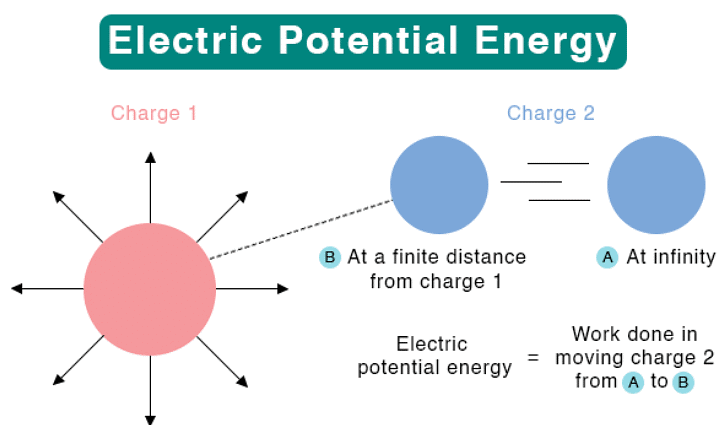
- The electric potential of the Earth is defined as zero potential. Therefore, a positively charged conductor has a more positive potential than the Earth, while a negatively charged conductor has a negative potential that is less than that of the Earth.
- The electric potential difference between two points in an electric circuit is defined as the work done in moving a unit positive charge from one point to the other.
- If W joules of work are done in bringing a test charge Q coulombs from infinity to a point P, then the electric potential V at point P is given by the formula V = W/Q.
- Conversely, the work needed to move a charge Q from infinity to a point P where the electric potential is V is expressed as W = QV.
- The SI unit of work is the joule (J), and the SI unit of charge is the coulomb (C).
Potential Difference
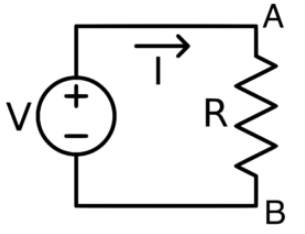
- When the current flows between two points A and B of an electric circuit, we only consider the charge between the points A and B, this means it is not necessary to know the exact potential at each point A and B. It is sufficient to know the potential difference between the two points A and B. Therefore the potential difference between the two points is equal to the work done in moving a unit positive charge from one point to the other.
- The potential difference is expressed in volt (V). The potential difference between two points is said to be 1 volt if the work is done in moving 1-coulomb charge from one point to other is 1 joule.
1 volt= 1 joule/ 1 coulomb
- Unit for measuring the potential difference is volt and instrument used for measuring potential difference is a voltmeter.
- While connecting voltmeter in the circuit, positive terminal of the voltmeter should be in connection with the positive terminal of the cell and negative with the negative of the cell.
What happens when the Battery is in connection with the Circuit?
When a conducting wire is in connection with the terminals of the battery, a potential difference is created between the ends of the conductor.
This potential difference sets up an electric field throughout the conductor.The electrons near the positive terminal of the battery are attracted by it and start on the move towards positive terminal.
What are the Heating Effects of the Electric Current?
When a current flows through a conductor, heat energy generates in the conductor. The heating effects of electric current depend on three factors:
- The resistance of the conductor. A higher resistance produces more heat.
- The time for which the current flows. The longer the time the amount of heat production is high.
- Higher the current the amount of heat generation is also large.
Hence the heating effect produced by an electric current, I through a conductor of resistance, R for a time, t is given by H = I2Rt. This equation is the Joule’s equation of electrical heating.
Joule’s law states the amount of heat production in a conductor is :
- Directly proportional to the square of electric current flowing through it.
- Is directly proportional to the resistance of the conductor.
- Directly proportional to the time for which electric current flows through the conductor.
Symbols of Components
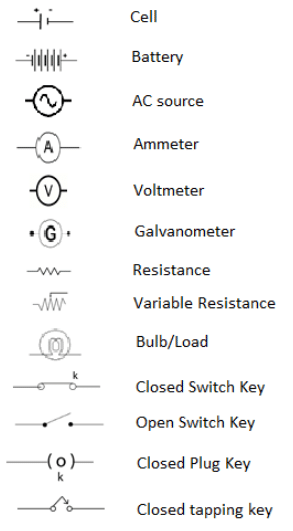
Kirchhoff’s First Law
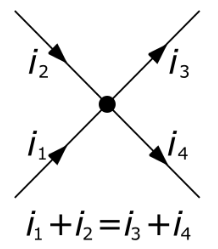
The sum of electric currents entering a junction is equal to the sum of the currents leaving the junction. Kirchhoff’s First Law is a natural consequence of the conservation of electric charge. If the currents entering a junction are positive, and the currents leaving the junction negative, the sum of the currents is zero.
ΣI = 0
(ΣI = 0 ⇒ I1 + I2 = I3 + I4 + I5)
Kirchhoff’s Second Law
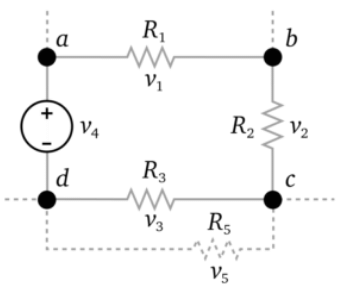
The sum of electric potential differences along any closed loop in a DC circuit is zero. Kirchhoff’s Second Law is a consequence of the conservation of energy. A change in the electric potential change equals the change in electric potential energy per unit charge. If the electric potential is negative in the direction of electric current and the increase in potential is positive, the sum of the changes in electric potentials along any closed loop in a dc circuit is zero.
ΣV = 0
Application of Heating Effects of Current
Electric Heater and Water Heater
Electric Heater and Water Heater
When these appliances are in connection with the supply of electricity they become hot but wires remain cold. They consist nichrome which has high resistivity and hence high resistance. Heat produced is directly proportional to the resistance of material through which the current flows.
Electric Bulb
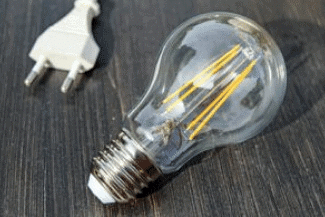
- The filament of an electric bulb consists of tungsten with a high melting point.
- A filament is enclosed in a glass envelope which is filled with nitrogen and argon gas. Since the resistance of thin filament is very high, amount of heat production is large same as the electric current that flows through the filament.
- Due to a large amount of heat production, the filament bulb becomes white hot. Hence filament of bulb emits light and heat.
Electric Fuse
- Wires consisting of some materials melt quickly and break when large electric current passes through them.
- These wires are used for making electric fuses. All electrical circuits in all buildings consist of electrical fuses. There is a maximum limit on the current which can safely flow through a circuit.
- If by accident the current exceeds this limit, the wires may overheat and cause a fire. If a proper fuse is there in the circuit, it will blow off and break the circuit.
- A fuse is thus a safety device which prevents damages to electrical circuits and possible fires.When large electric current flow through a circuit and hence through fuse wire, a large amount of heat production occurs.
- Due to this large heat production, the fuse wire melts and the circuit breaks so that the current stops flowing through the circuit.This saves the electric circuit from burning. Electric fuses have ratings as 1A,2A,3A,5A,10A.
Electric Iron

- The element of the electric iron constitutes alloys having a high melting point. Electric heater and geyser work on the same mechanism.
|
35 docs|1 tests
|
FAQs on Overview: Electricity Part - 2 - Basic Electricity for SSS 2
| 1. What is electric potential? |  |
| 2. What is potential difference? |  |
| 3. What are the heating effects of electric current? |  |
| 4. What are the symbols of components used in electric circuits? |  |
| 5. What is Kirchhoff's first law? |  |
















